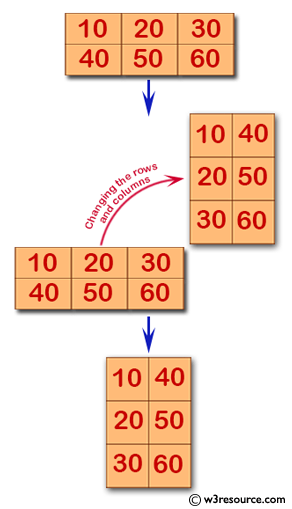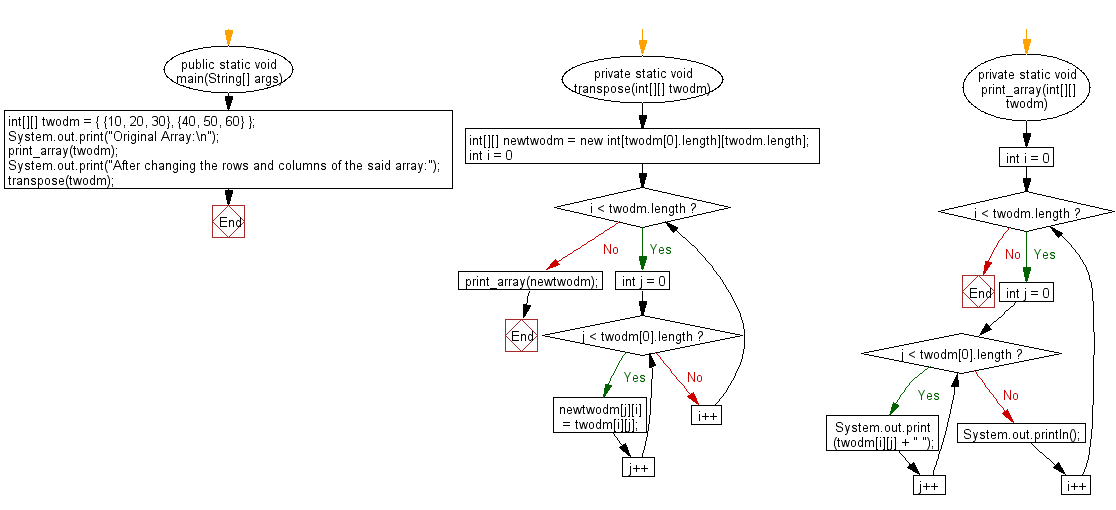Java: Print an array after changing the rows and columns of a specified two-dimensional array
Transpose 2D Array
Write a Java program to print an array after changing the rows and columns of a two-dimensional array.
Original Array:
10 20 30
40 50 60
After changing the rows and columns of the said array:10 40
20 50
30 60
Visual Presentation:

Sample Solution:
Java Code:
import java.util.Scanner;
public class Solution {
public static void main(String[] args) {
// Initializing a 2D array with values
int[][] twodm = {
{10, 20, 30},
{40, 50, 60}
};
// Displaying the original array
System.out.print("Original Array:\n");
print_array(twodm);
// Performing transpose operation on the array
System.out.print("After changing the rows and columns of the said array:");
transpose(twodm);
}
// Method to transpose the given 2D array
private static void transpose(int[][] twodm) {
// Creating a new 2D array to store the transposed elements
int[][] newtwodm = new int[twodm[0].length][twodm.length];
// Transposing the elements of the array
for (int i = 0; i < twodm.length; i++) {
for (int j = 0; j < twodm[0].length; j++) {
newtwodm[j][i] = twodm[i][j];
}
}
// Printing the transposed array
print_array(newtwodm);
}
// Method to print the elements of a 2D array
private static void print_array(int[][] twodm) {
// Looping through the array and printing its elements
for (int i = 0; i < twodm.length; i++) {
for (int j = 0; j < twodm[0].length; j++) {
System.out.print(twodm[i][j] + " ");
}
System.out.println();
}
}
}
Sample Output:
Original Array: 10 20 30 40 50 60 After changing the rows and columns of the said array:10 40 20 50 30 60
Flowchart:
For more Practice: Solve these Related Problems:
- Write a Java program to transpose a non-square matrix and print the resulting array.
- Write a Java program to perform an in-place transpose of a square matrix without using extra space.
- Write a Java program to transpose a 2D array and then reverse each row of the transposed matrix.
- Write a Java program to transpose a square matrix and calculate the sum of its primary diagonal.
Go to:
PREV : Print Boolean Matrix.
NEXT : Largest Integer Base-2 Logarithm.
Java Code Editor:
Contribute your code and comments through Disqus.
What is the difficulty level of this exercise?
Test your Programming skills with w3resource's quiz.

